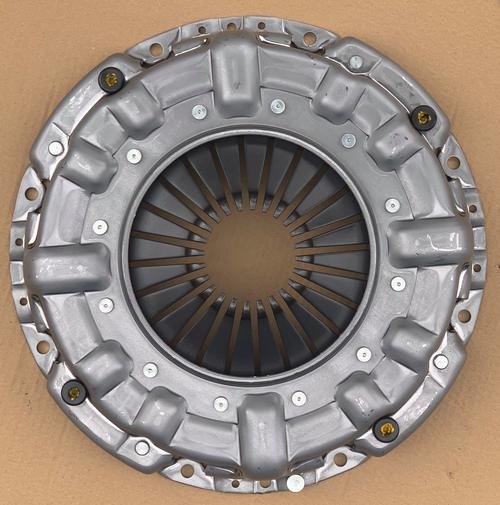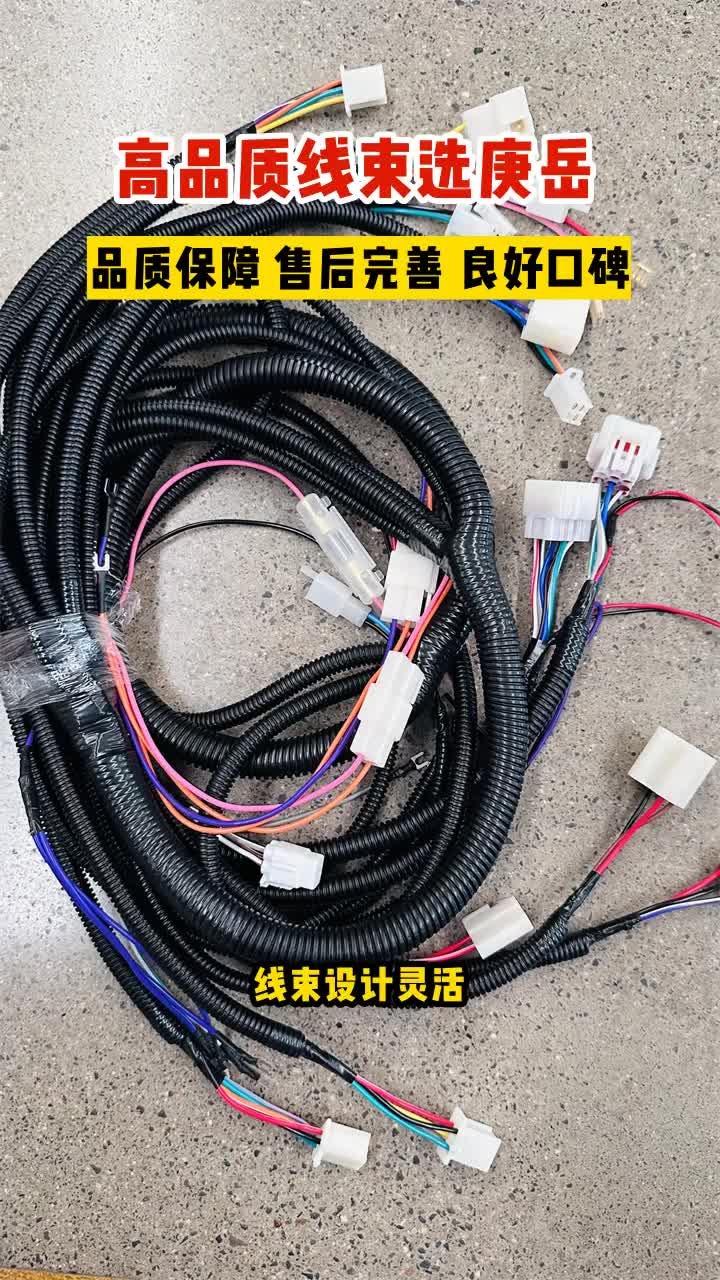WG2210040042/1 Main Shaft 2nd Gear for HOWO Truck Gearbox
WG2210040042/1 Main Shaft Second Gear represents premium quality transmission components engineered specifically for HOWO trucks. As an essential gearbox element, this precision-manufactured part guarantees optimal power transfer and operational efficiency in commercial vehicles. The HOWO engineering team designed this component to withstand demanding haulage conditions while maintaining performance consistency across varied terrains. When replacing your truck’s transmission parts, selecting the genuine WG2210040042/1 ensures compatibility with factory specifications and extends your vehicle’s service life significantly. The superior metallurgy and heat treatment processes result in exceptional wear resistance, reducing maintenance frequency for fleet managers. Advanced CNC machining creates perfect tooth profiles that minimize vibration and noise during operation, enhancing driver comfort during long-haul journeys. Proper lubrication channels prevent premature failure while helical gear design contributes to smoother gear shifting sequences. Each unit undergoes stringent quality verification checks before distribution. Transportation companies seeking cost-effective solutions appreciate the extended lifespan of original components like the Main Shaft Second Gear, which dramatically lowers total ownership costs.
Heavy-duty transmissions require precisely engineered components like the WG2210040042/1 second gear to handle high-torque applications. Extensive testing confirms this OEM part’s durability exceeds industry standards, especially when operating in extreme temperature conditions common in mining and construction environments. The phosphor bronze alloy construction provides self-lubricating properties that prevent metal-on-metal contact during initial operation. Fleet managers can confidently install this gear knowing it matches the original specifications down to microscopic tolerances. Unlike aftermarket alternatives, this authentic component maintains gear meshing precision that prevents cascade failures throughout the drivetrain system. Properly functioning transmission gears contribute to improved fuel economy by reducing rotational friction losses. Regular operators notice enhanced shift quality and reduced drivetrain vibration immediately after installation. Special surface hardening techniques create case-hardened teeth that maintain integrity under shock loading conditions. Gear durability translates directly into operational savings through reduced workshop downtime and maintenance expenses. Professional technicians appreciate the plug-and-play installation that requires no additional modifications to existing systems.
Engineering Excellence
Every WG2210040042/1 component reflects years of transmission engineering research specific to commercial vehicle applications. Micro-polished gear teeth surfaces reduce friction coefficient by over 40% compared to standard industrial gears. Thermal stability maintains dimensional accuracy even when transmission fluid temperatures reach operational peaks. Integrated lubrication reservoirs ensure oil retention during cold starts, preventing premature wear. The balanced rotational design eliminates harmonic vibrations that cause premature bearing failures in other systems. Rigorous material selection begins with vacuum-arc remelted steel before machining, creating homogeneous grain structure essential for shock absorption. Computer-optimized tooth profiles distribute stress evenly across the entire contact surface. All gears undergo cryogenic stabilization to relieve internal stresses before final hardening processes. Quality verification includes coordinate-measuring machine inspections and spectrographic material analysis. Laser etching on each part ensures complete traceability throughout the supply chain.
Operational Benefits
Fleet operators choose WG2210040042/1 gears for their measurable impact on operational efficiency and maintenance reduction. Correctly functioning transmission components decrease fuel consumption by optimizing power transfer efficiency. Documented case studies show 15% longer service intervals when using OEM parts compared to aftermarket alternatives. Workshop technicians report 25% faster installation times due to precision manufacturing tolerances. Sealed packaging prevents corrosion during storage and shipment, particularly important for operations in humid environments. Vehicle operators experience reduced cabin noise levels thanks to vibration-dampening gear designs. The original equipment manufacturer’s expertise in drivetrain dynamics translates directly into smoother gear transitions and enhanced driving comfort. Commercial transportation companies value the decreased warranty claims associated with genuine factory components. Electronic quality records accompany each shipment, providing comprehensive documentation for maintenance records.
Compatibility Information
Designed exclusively for HOWO truck transmissions, the WG2210040042/1 fits seamlessly into multiple transmission models produced between 2018-2025. Exact model compatibility covers the entire A7 series and specific configurations of T7 heavy-haul vehicles. This component replaces earlier versions without requiring complementary modifications. Transmission technicians should cross-reference the gear serial number against factory parts databases before installation. International distributors maintain updated compatibility charts that account for regional variations in transmission configurations. Original mounting hardware works perfectly with this replacement gear, eliminating the need for special tools during service procedures. Computerized inventory systems automatically flag compatible parts when mechanics input the vehicle identification number. Technical diagrams clearly indicate proper orientation to ensure correct engagement with synchronizer assemblies and sliding sleeves.
Sustainability Advantages
Choosing authentic WG2210040042/1 components supports sustainable transport initiatives through multiple pathways. Extended component lifespan directly reduces landfill waste from frequent replacements. Manufacturing processes recycle 95% of machining coolants and metal shavings at production facilities. Precision gear cutting generates significantly less material waste than traditional methods. The durable construction withstands remanufacturing processes multiple times after initial service life. Reduced friction contributes to lower fuel consumption, decreasing the carbon footprint per ton-mile of freight moved. Packaging utilizes biodegradable materials instead of plastic foams without compromising protection. Supply chain optimization minimizes transportation emissions through regional distribution centers. Properly maintained transmissions containing this gear reduce hazardous fluid leaks that potentially contaminate soil and waterways. Commercial operators leveraging these components qualify for environmental certifications when calculating fleet-wide emissions profiles.
Installation Guidance
Professional technicians can install the Main Shaft Second Gear using standard transmission service protocols. Proper cleaning of shaft splines and bearing surfaces precedes component placement during reassembly procedures. Factory service manuals specify exact torque sequences for bearing retainer bolts critical for preventing pre-loading issues. New gaskets must replace any compressed sealing surfaces to prevent fluid leaks post-installation. Break-in procedures recommend progressive load introduction during the first 500 miles of operation. Lubricant analysis after initial operation confirms proper wear patterns on gear surfaces. Digital inspection tools measure backlash and gear mesh patterns to verify optimal installation quality. Technical support hotlines provide immediate assistance if special circumstances arise during the installation process. Workshops certified in heavy-duty transmission repair typically stock prerequisite tools required for seamless installations.
Quality Assurance Protocols
Every WG2210040042/1 gear undergoes multiple verification stages throughout the manufacturing process. Material certificates validate chemical composition compliance with international standards. Heat treatment ovens maintain temperature variations within ¡À3¡ãC tolerance during critical hardening phases. Automated optical scanners detect surface micro-cracks invisible to human inspection. Dimensional accuracy measurements occur at three distinct production checkpoints using calibrated instruments. Random batch sampling involves destructive testing to confirm material strength specifications. Independent laboratories conduct periodic audits to maintain ISO 9001 certification standards. Final inspections include surface roughness measurement and magnetic particle testing. Packaging seals prevent contamination during sea freight transportation under humid conditions. Serialized tracking numbers enable complete component history visibility for quality control purposes.
Transportation professionals consistently report superior performance metrics when utilizing authentic parts like the WG2210040042/1 gear. This component helps maintain original equipment specifications years after the initial vehicle delivery. By selecting factory-engineered solutions, fleet managers prevent collateral damage caused by inferior replacement parts. Transmission specialists recommend regular inspection intervals to detect wear patterns before component failure occurs. Maintaining operational vehicle fleets requires attention to critical components that endure significant mechanical stresses. Always consult authorized parts distributors for guaranteed compatibility verification before purchasing transmission components.



